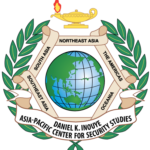By: Professor Chaw Chaw Sein, Ph.D. (CSRT 18-1)
During my life time, I have personally experienced several massive political crises, such as 1988 students’ uprising which began at the University of Yangon where I now teach, the “Saffron Revolution” initiated by Buddhist monks for democratization in 2007, and of course, the on-going ethnic armed conflicts. I had lived through crises created by mother-nature such as Cyclone Nargis of 2008 and the major floods/landslides of 2015. During the outbreaks of SARS and H1N1, Myanmar was not spared and today it has become the latest casualty of the COVID-19 pandemic. Because of our history, Myanmar people are used to coping and living with both natural and man-made crises. I must say we are incredibly resilient and now will be tested again with COVID-19.
For a while, we optimistically thought Myanmar might be spared from this disease. As the world turned red with the virus infection, the people and government of Myanmar went about their normal business until March 23 at 23:45 when the Myanmar Ministry of Health and Sports announced that they now had two patients testing positive with COVID-19. The authority came to discover that these two patients were overseas travelers who had been mingling within the community for some time. We woke up to the reality of the new world on that date. Even up to the March 23, our university went about administering exams for the first semester (which was scheduled for March 18-23) of our academic year. All of that changed on the 23rd. To borrow a famous quote from the U.S. President Franklin D. Roosevelt, the 23rd of March 2020 will be the “day of infamy” for Myanmar as this horrendous pandemic reached the Myanmar shores.
Impact of COVID-19 Arrival
Immediately on March 24, all exams were suspended and postponed. Ministry of Education shut down all universities in Myanmar with no exact date for re-opening since they had no idea of how long it would take to combat the virus. Since the discovery of the first two patients in Myanmar, the country has been dealing with the side-effects in addition to the health emergency as the government is forced to shut down its economic activities to control the spread of the virus. Closing of some industries is negatively effecting the most vulnerable population of our society and the working poor who live hand-to-mouth on the daily basis. There has been increased reports of some unscrupulous employers withholding their employees’ wages.
Since the initial virus infections in Myanmar seemed to have been carried into the country by the oversea travelers, the Ministry of Foreign Affairs temporary suspended all types of visa for foreign nationals from all countries visiting Myanmar on March 28. This has a huge negative implication on Myanmar economy and those who depend on the tourism sector. As of April 2, 20 patients are positive for COVID-19 and one has died from the disease. Countries in the world had been grappling with this outbreak for past three months and now Myanmar has joined the ranks. As the infection spreads, Myanmar healthcare workers most likely will face shortages of medical equipment such as the ventilators and personal protection equipment (PPE) given we are three months behind other countries.
Cancellation of Myanmar New Year Festival and Armed Forces Day Celebration
In light of COVID-19 spread, the Myanmar government announced the suspension of the Myanmar New Year Water Festival (Thingyan) which usually occurs around mid-April. This is unprecedented. Even when we had faced various political uprisings in the past, we still celebrated Thingyan because this is one festival that is culturally steeped, extremely meaningful, and traditionally entrenched in our society. Not having one this year would be devastating to Myanmar people’s psyche. This is the first ever suspension of New Year festival in my life time. It is customary for Myanmar people to go on pilgrimage to revered pagodas and temples during this timeframe. Such places would be filled with people as they welcome and cleanse for the New Year. The COVID-19 concerns would leave ancient temples of Bagan — the birth place of modern Myanmar and also an UNESCO world heritage site where Myanmar people return every year to celebrate the New Year since 900 A.D. — empty this year. This will surely have negative impact on the local people’s livelihood. Similar to that of Christmas sales in other countries, the local vendors in Bagan depends on selling most of their products during this festival time. Even the Myanmar military has postponed the Armed Forces Day, which was March 27, celebrations. Again, this postponement is an extraordinary act and the first since Myanmar independence in 1948.
Overwhelmed at Border Entry Points
As the Myanmar government started to impose travel restrictions between countries to control the spread of the virus, many Myanmar overseas workers, scholars, and businessmen frantically returned home. According to one of the DKI APCSS alumni from their Comprehensive Security Responses to Terrorism (CSRT)course, who is responsible for managing the border entries between Myanmar and Thailand, a sudden influx of thousands of returning Myanmar migrant workers from Thailand overwhelmed the border entry points. During this frantic return, one returnee tested positive with COVID-19. Now, all the returnees from that border entry point are put into a 14-day quarantine at the designated facilities arranged by the state. He noted that alumni-to-alumni connection between Myanmar and Thailand from the CRST course has been tremendously helpful in much needed cooperation to manage the situation from both sides of the border.
Myanmar Government’s Cooperative Response to COVID-19
To tackle this crisis, the national, high-level Central Committee on Prevention, Control and Treatment of the Coronavirus Disease (CPCTCD) was formed on March 26 and is chaired by State Counsellor, Daw Aung San Suu Kyi. She has started her crisis communication forum to update the populace on status of the government’s response to COVID-19. She recently created her own Facebook account so as to be in touch with grass root needs. With the guidance from CPCTCD, the Ministry of Health is now at the forefront of the fight on COVID-19. However, one ministry alone will not be adequate to respond to this pandemic crisis. As such, the government has developed a whole-of-society approach to include several ministries, non-governmental organizations, international organizations, civil society organizations including religious groups, and volunteers. The religious centers, schools, and training camps are planning their facilities to house the quarantine individuals and to take in overflow of patients from the hospitals.
Civil-Military Relations in the fight for COVID 19
One positive benefit emerging from this situation is the improved civil-military cooperation. Without passing judgement of the past actions, the Myanmar military does have a lot of experience in crisis management and movement control at a large scale. As you may be aware, Myanmar civil-military relations have not been easy and plagued by tension and conflict throughout our country’s post-independence history. Recently, there was a huge debate and a tug-of-war between the civilian parliament members and the 25% of appointed military members for a proposal of amending the constitution. Despite this on-going tension, the government was able to form the COVID-19 ten-member Committee on Control and Emergency Response which included top five military officers on March 30. It is chaired by the Vice President with an aim to effectively carry out quarantine procedures with a focus on stability, security and law enforcement within the communities. The military has provided additional medical equipment and supplies and military hospitals are prepared to take-in the COVID-19 suspected civilian patients. The military personnel are serving together at the forefront with the civilian healthcare workers to reduce the spread of virus.
Myanmar Resilience
As we have learned from other countries that have gone through this pandemic earlier than Myanmar, the community’s involvement and the populace’ behavior can slow down the spread of the virus and save lives. Unlike the time of the military administration, we now have a flourishing media environment and many outlets available for the citizens to get their information. In time of crisis, people crave information and thus, demand for information increases exponentially. It is an excellent opportunity for the government to exercise effective crisis communication to ensure the citizens are getting timely and accurate information. Without an effective crisis communication strategy, a lot of misinformation can spread, which can lead to instability, insecurity, and lawlessness. An effective crisis communication strategy can harness community support and shape behavior. It is very encouraging for me to see Myanmar government stepping up the crisis communications regarding the status of outbreak and the government’s response. The year 2020 is an important year for Myanmar as there will be a general election in coming November. The current administration’s ability to manage this crisis may have a significant influence on the outcome of the election. Regardless, based on my personal experiences with previous crises in Myanmar, I believe in Myanmar people’s resilience. With increased crisis communication and cooperative crisis response, Myanmar should be able to weather through this COVID-19 pandemic as well.
Published: April 10, 2020
Category: Crisis Updates from the Region
Volume:
Author:





